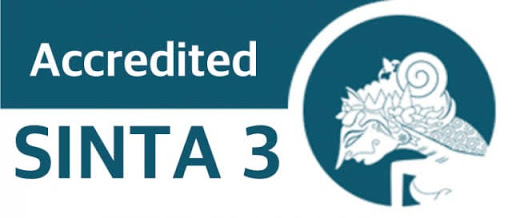Semiotic Analysis of Language in Bullying Discourse: Unveiling Structures and Meanings
Abstract
This research delves into the intricate dynamics of bullying by applying a semiotic approach to language analysis, aiming to uncover the inherent structures and meanings embedded in the discourse surrounding bullying. Bullying, a pervasive and complex social phenomenon, demands a nuanced examination of the language employed within its context. Employing semiotic analysis and qualitative research methodology, this study seeks to deconstruct the layers of meaning contained in bullying discourse by understanding the signs and symbols inherent in language. The data for this research were sourced from a diverse array of outlets, including everyday conversations related to bullying. The semiotic analysis was then applied to identify and interpret linguistic signs, encompassing words, phrases, and symbols, thereby elucidating the veiled meanings within the discourse of bullying. The results of the analysis illuminate that language in the context of bullying manifests itself through both verbal and non-verbal signs, collectively shaping structures of power and control. The findings of this study provide valuable insights into the instrumental role of language as a tool for perpetrating bullying and the intricate process of meaning construction within such contexts. Understanding the dynamics of language in social interactions marked by acts of intimidation and humiliation contributes to a broader comprehension of bullying. Acknowledging the intricacies of language in bullying discourse is pivotal for devising effective strategies to address and counteract this prevalent social issue. This research contributes to the ongoing discourse on bullying by underscoring the significance of linguistic analysis in deciphering the layers of meaning within this complex social phenomenon. Ultimately, it calls for a holistic approach that integrates linguistic insights into the broader framework of anti-bullying initiatives, fostering a more comprehensive understanding of the phenomenon.
Absrtak
Penelitian ini menggali dinamika rumit perundungan dengan menerapkan pendekatan semiotik terhadap analisis bahasa, bertujuan untuk mengungkap struktur dan makna yang melekat dalam wacana seputar perundungan. Perundungan, sebagai fenomena sosial yang kompleks dan meresap, menuntut pemeriksaan yang mendalam terhadap bahasa yang digunakan dalam konteksnya. Dengan menggunakan analisis semiotik dan metodologi penelitian kualitatif, studi ini berusaha mendekonstruksi lapisan-lapisan makna yang terkandung dalam wacana perundungan dengan memahami tanda dan simbol yang melekat dalam bahasa. Data untuk penelitian ini diperoleh dari berbagai sumber, termasuk percakapan sehari-hari yang terkait dengan perundungan. Analisis semiotik kemudian diterapkan untuk mengidentifikasi dan menafsirkan tanda-tanda linguistik, mencakup kata-kata, frasa, dan simbol, sehingga mengungkap makna terselubung dalam wacana perundungan. Hasil analisis menunjukkan bahwa bahasa dalam konteks perundungan terwujud melalui tanda verbal dan non-verbal, yang secara kolektif membentuk struktur kekuasaan dan kontrol. Temuan studi ini memberikan wawasan berharga tentang peran instrumental bahasa sebagai alat untuk melakukan perundungan dan proses konstruksi makna yang rumit dalam konteks tersebut. Memahami dinamika bahasa dalam interaksi sosial yang ditandai oleh tindakan intimidasi dan penghinaan berkontribusi pada pemahaman yang lebih luas tentang perundungan. Mengakui kerumitan bahasa dalam wacana perundungan sangat penting untuk merancang strategi yang efektif guna menangani dan melawan isu sosial yang meresap ini. Penelitian ini berkontribusi pada wacana yang sedang berlangsung tentang perundungan dengan menekankan pentingnya analisis linguistik dalam menguraikan lapisan makna dalam fenomena sosial yang kompleks ini. Pada akhirnya, penelitian ini menyerukan pendekatan holistik yang mengintegrasikan wawasan linguistik ke dalam kerangka inisiatif anti-perundungan yang lebih luas, mendorong pemahaman yang lebih komprehensif tentang fenomena ini.
Keywords
Full Text:
PDFReferences
Awiria, O., Olweus, D., & Byrne, B. (1994). Bullying at School - What We Know and What We Can Do. British Journal of Educational Studies, 42(4), 403-406. https://doi.org/10.2307/3121681
https://doi.org/10.2307/3121681
Carey, J. W. (2008). Communication as culture: Essays on media and society: Revised edition. Essays on Media and Society. https://doi.org/10.4324/9780203928912
Chomsky, N. (1965). Aspects of a theory of syntax (50th ed.). The MIT Press. http://www.jstor.org/stable/j.ctt17kk81z
Cutright, M. (2014). Daring Greatly: How the Courage to Be Vulnerable Transforms the Way We Live, Love, Parent, and Lead. Journal of College and Character, 15(4), 273-276. https://doi.org/10.1515/jcc-2014-0032
Doumas, D. M., Midgett, A., & Peck, M. (2023). Gender Differences in Defending Behavior among Elementary School Students Trained in a Bullying Bystander Program: Is Self-Esteem a Moderator?. Journal of Applied School Psychology, 39(3), 244-267. https://doi.org/10.1080/15377903.2022.2152917
Eckert, P. (2012). Three waves of variation study: The emergence of meaning in the study of sociolinguistic variation. Annual Review of Anthropology, 41, 87-100. https://doi.org/10.1146/annurev-anthro-092611-145828
https://doi.org/10.1146/annurev-anthro-092611-145828
Eco, U. (1979). A Theory of Semio Tics. Indiana University Press. http://www.jstor.org/stable/j.ctt16xwcfd
Ekman, P. (1993). Facial expression and emotion. American Psychologist, 48(4), 384-392. https://doi.org/10.1037/0003-066X.48.4.384
Ekman, P. (2003). Emotions Revealed: Recognizing Faces and Feelings to Improve Communication and Emotional Life (second edition). In New York. https://www.amazon.com/Emotions-Revealed-Second-Recognizing-Communication/dp/0805083391
Espelage, D. L. (2014). Ecological Theory: Preventing Youth Bullying, Aggression, and Victimization. Theory into Practice, 53(4), 257-264. https://doi.org/10.1080/00405841.2014.947216
Farrington, D. P. (1993). Understanding and Preventing Bullying. Crime and Justice. 17, 381-458. https://doi.org/10.1086/449217
Gramsci, A. (2013). Selections from the prison notebooks. In The Applied Theatre Reader. https://doi.org/10.4324/9780203891315-31
Gumperz, J. J. (2014). Discourse Strategies. Cambridge: Cambridge UP. In The Discourse Studies Reader, 84, 218-223. https://doi.org/10.1075/z.184.47gum
Haltigan, J. D., & Vaillancourt, T. (2014). Joint trajectories of bullying and peer victimization across elementary and middle school and associations with symptoms of psychopathology. Developmental Psychology, 50(11), 2426-2436. https://doi.org/10.1037/a0038030
Hammarén, N. (2022). Are bullying and reproduction of educational inequality the same thing? Towards a multifaceted understanding of school violence. Power and Education, 14, 1-10. https://doi.org/10.1177/17577438211052650
Hymel, S., & Swearer, S. M. (2015). Four decades of research on school bullying: An Introduction. In American Psychologist, 70(4), 293-299. https://doi.org/10.1037/a0038928
Juvonen, J., & Graham, S. (2014). Bullying in schools: The power of bullies and the plight of victims. In Annual Review of Psychology, 65, 159-185. https://doi.org/10.1146/annurev-psych-010213-115030
Kendon, A., & Birdwhistell, R. L. (1972). Kinesics and Context: Essays on Body Motion Communication. The American Journal of Psychology, 85(3), 441-455. https://doi.org/10.2307/1420845
Lees, R. B., & Chomsky, N. (1957). Syntactic Structures. Language, 33(3), 375-408. https://doi.org/10.2307/411160
London, R., & Ingram, D. (2018). Social Isolation in Middle School. School Community Journal, 28(1), 107-127. https://files.eric.ed.gov/fulltext/EJ1184924.pdf
Mehrabian, A. (1971). Silent messages: Implicit communication of emotions and attitudes. Wadsworth.
Muchtar, J., Sahib, H., & Rahman, F. (2023). The Refusal Catcalling Strategy by Women in Makassar: Semiotics Analysis. International Journal of Current Science Research and Review, 6(5), 2941-2951. https://doi.org/10.47191/ijcsrr/v6-i5-32
Murphy, S. A., Cox, D. R., & Wermouth, N. (1998). Multivariate Dependencies: Models, Analysis and Interpretation. Biometrics, 54(1), 393-394. https://doi.org/10.2307/2534028
Peirce, C. S. (1931). The Collected Papers of Charles Sanders Peirce. Search, r•.
Pinker, S. (1994). The Language Instinct: How the Mind Creates Language (Penguin Science). Neuroscience.
https://doi.org/10.1037/e412952005-009
Richeson, J. A., & Sommers, S. R. (2016). Toward a social psychology of race and race relations for the twenty-first century. Annual Review of Psychology, 67(1), 439-463. https://doi.org/10.1146/annurev-psych-010213-115115
Rigby, K. (2007). Bullying in Schools: and what to do about it. National Library of Australia.
Saussure, F. (2010). Saussure- Course in General Linguistics. In Peter Owen.
Tannen, D. (2007). Talking voices: Repetition, dialogue, and imagery in conversational discourse. In Talking Voices: Repetition, Dialogue, and Imagery in Conversational Discourse, (pp 48-101). https://doi.org/10.1017/CBO9780511618987
Vorlíček, R., & Kollerová, L. (2024). Being disliked and bullied: A case revealing interplay between peer status and bullying. Children and Society. 38(2), 419-435. https://doi.org/10.1111/chso.12712
White, P. D. (1960). Elements of Style. In Journal of the American Medical Association, 172(8), 835-845. https://doi.org/10.1001/jama.1960.03020080083029
Williams, S. G., Langhinrichsen-Rohling, J., Wornell, C., & Finnegan, H. (2017). Adolescents Transitioning to High School: Sex Differences in Bullying Victimization Associated With Depressive Symptoms, Suicide Ideation, and Suicide Attempts. Journal of School Nursing, 33(6), 467-479. https://doi.org/10.1177/1059840516686840
DOI: https://doi.org/10.26499/bahasa.v6i1.935
Refbacks
- There are currently no refbacks.

This work is licensed under a Creative Commons Attribution-NonCommercial-ShareAlike 4.0 International License.
This work is licensed under a Creative Commons Attribution-ShareAlike 4.0 International License.
Apartemen Suite Metro
Jalan Soekarno Hatta No. 698B, Kelurahan Jatisari - Kecamatan Buahbatu Bandung, Jawa Barat 40286























